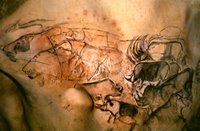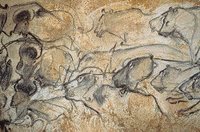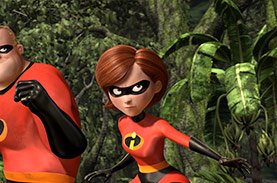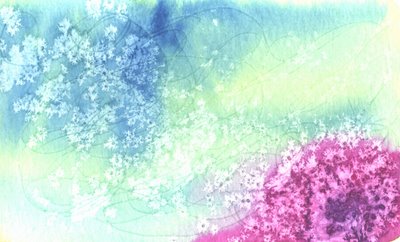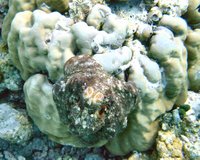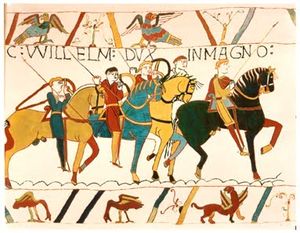 Mention the Connemara to most French speakers, and the first thing that comes to mind is the Michel Sardou song. Or maybe it's just me? It was one of his big hits, and I'd say everybody from my generation can at least hum the first few bars. Unlike "La Mer" and "Li Bia Bouquet" (see March posts), I won't be able to sing this song to you, but I can hear it perfectly clearly in my head! Maybe I'll learn the words some day!
Mention the Connemara to most French speakers, and the first thing that comes to mind is the Michel Sardou song. Or maybe it's just me? It was one of his big hits, and I'd say everybody from my generation can at least hum the first few bars. Unlike "La Mer" and "Li Bia Bouquet" (see March posts), I won't be able to sing this song to you, but I can hear it perfectly clearly in my head! Maybe I'll learn the words some day!Anyway, we were in Connemara for the last few days. We toured around the whole area - Oughterard, Recess, Carna, Clifden, the Sky Road, Kylemore abbey, and we drove as far North as Westport. We were lucky with the weather - blue skies on Friday and Saturday. This morning was completely overcast and wet, but we didn't mind, as we were driving back to Dublin.
We stayed in the Abbeyglen Castle Hotel. Whatever you do, don't go there! It's in bad need of a face lift - cracks in the tiles and the ceiling in the bathroom, old furniture, thin walls, dilapidated snooker room, 2 parrots outside their cage in the reception area... It is supposed to be a 4 star hotel and it's part of the Manor House hotels, so we expected a much better place. Brendan had read a review about it on the morning we left that alerted us to these issues, so we were not completely shocked. As we had booked it using Amex points, at least it didn't feel like we had spent good money for such a place! It wasn't all bad - the rooms were clean, the food was good, there was free tea with scones between 3 & 5, there was a free champagne reception on Saturday, and there was a helipad straight outside our room window, and we saw a helicopter land, refuel and take off from the comfort of our own room. But if you're expecting 4-star comfort and luxury, this is not the place to go!
The most beautiful spot of all for us was Killary Harbour and Leenaun. According to
 Wikipedia, Killary Harbour is Ireland's only fjord. We were lucky to see it on a very still morning. The water was like glass and reflected the mountains and the sky to perfection. We took plenty of pictures. I'll share some of these with you over time.
Wikipedia, Killary Harbour is Ireland's only fjord. We were lucky to see it on a very still morning. The water was like glass and reflected the mountains and the sky to perfection. We took plenty of pictures. I'll share some of these with you over time.Remember to click on the pictures to see them on full screen.
And now, the words of the song, of course:
Terre brûlée au vent
Des landes de pierres
Autour des lacs
C'est pour les vivants
Un peu d'enfer
Le Connemara
Des nuages noirs
Qui viennent du nord
Colorent la terre
Les lacs les rivières
C'est le décor
Du Connemara
Au printemps suivant
Le ciel irlandais
Etait en paix
Maureen a plongé
Nue dans un lac
Du Connemara
Sean Kelly s'est dit
Je suis catholique
Maureen aussi
L'église en granit
De Limerick
Maureen a dit oui
De Tiperrary
Barry-Connely
Et de Galway
Ils sont arrivés
Dans le comté
Du Connemara
Y'avait les Connor's
Les O'Connely
Les Flaherty
Du Ring of Kerry
Et de quoi boire
Trois jours et deux nuits
Là-bas au Connemara
On sait tout le prix du silence
Là-bas au Connemara
On dit que la vie
C'est une folie
Et que la folie
Ca se danse
Terre brûlée au vent
Des landes de pierre
Autour des lacs
C'est pour les vivants
Un peu d'enfer
Le Connemara
On y vit encore
Au temps des Gaëls
Et de Cromwell
Au rythme des pluies
Et du soleil
Au pas des chevaux
On y croit encore
Aux monstres des lacs
Qu'on voit nager
Certains soirs d'été
Et replonger
Pour l'éternité
On y voit encore
Des hommes d'ailleurs
Venus chercher
Le repos de l'âme
Et pour le coeur
Un goût de meilleur
L'on y croit encore
Que le jour viendra
Il est tout près
Où les Irlandais
Feront la paix
Autour de la Croix
Là-bas au Connemara
On sait tout le prix de la guerre
Là-bas au Connemara
On n'accepte pas
La paix des Gallois
Ni celle des rois d'Angleterre
Des landes de pierres
Autour des lacs
C'est pour les vivants
Un peu d'enfer
Le Connemara
Des nuages noirs
Qui viennent du nord
Colorent la terre
Les lacs les rivières
C'est le décor
Du Connemara
Au printemps suivant
Le ciel irlandais
Etait en paix
Maureen a plongé
Nue dans un lac
Du Connemara
Sean Kelly s'est dit
Je suis catholique
Maureen aussi
L'église en granit
De Limerick
Maureen a dit oui
De Tiperrary
Barry-Connely
Et de Galway
Ils sont arrivés
Dans le comté
Du Connemara
Y'avait les Connor's
Les O'Connely
Les Flaherty
Du Ring of Kerry
Et de quoi boire
Trois jours et deux nuits
Là-bas au Connemara
On sait tout le prix du silence
Là-bas au Connemara
On dit que la vie
C'est une folie
Et que la folie
Ca se danse
Terre brûlée au vent
Des landes de pierre
Autour des lacs
C'est pour les vivants
Un peu d'enfer
Le Connemara
On y vit encore
Au temps des Gaëls
Et de Cromwell
Au rythme des pluies
Et du soleil
Au pas des chevaux
On y croit encore
Aux monstres des lacs
Qu'on voit nager
Certains soirs d'été
Et replonger
Pour l'éternité
On y voit encore
Des hommes d'ailleurs
Venus chercher
Le repos de l'âme
Et pour le coeur
Un goût de meilleur
L'on y croit encore
Que le jour viendra
Il est tout près
Où les Irlandais
Feront la paix
Autour de la Croix
Là-bas au Connemara
On sait tout le prix de la guerre
Là-bas au Connemara
On n'accepte pas
La paix des Gallois
Ni celle des rois d'Angleterre



